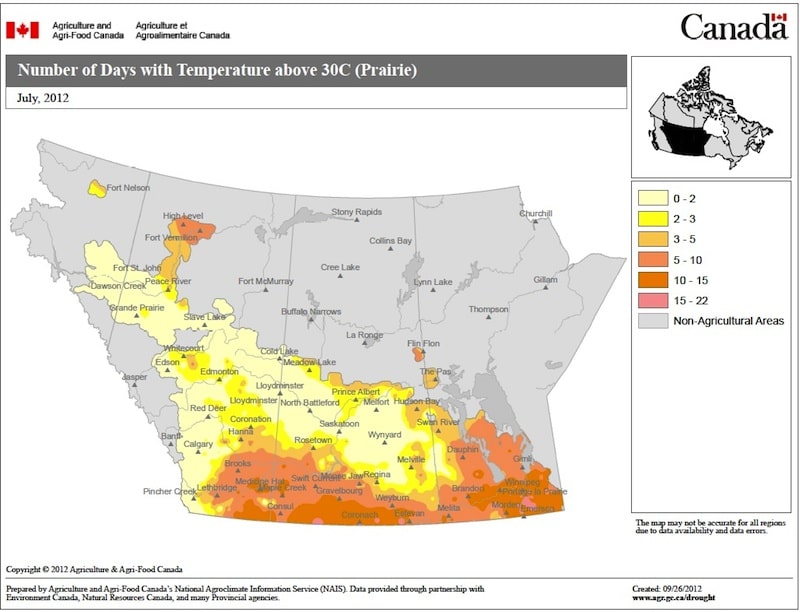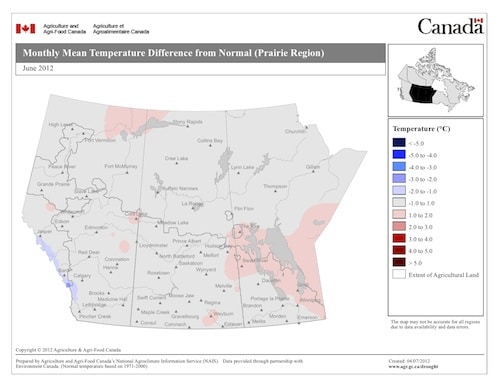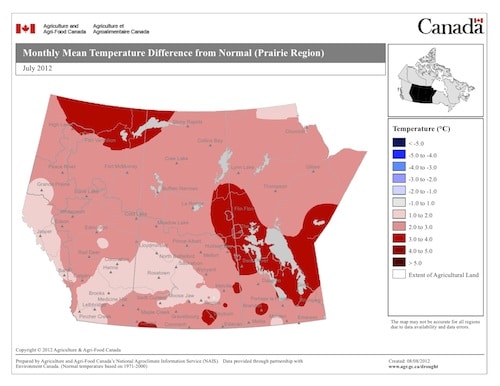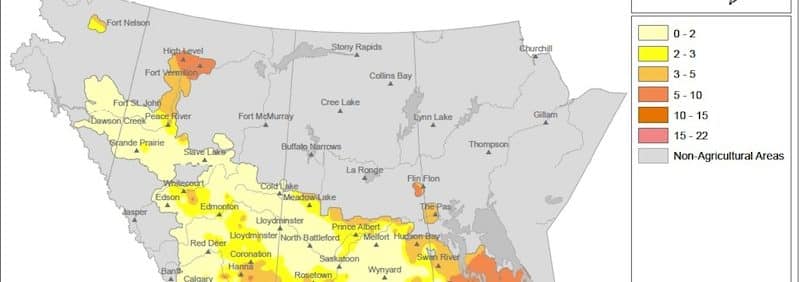


July was very hot, which is bad news for a cool season crop like canola. When daytime highs reach 28-29 C or higher, pollen viability and length of flowering drop off, and seed and pod abortion increase. July was also very dry for some regions. When heat and lack of rainfall are combined, the plant goes into survival mode. It wants to develop just enough seed to survive, then it stops flowering to conserve moisture.
Canola can usually compensate for a few hot days during flowering. It will flower longer to compensate for aborted flowers, but if conditions stay hot and if it doesn’t rain, the plant cannot recover. The stress has to be alleviated before the plant can shift out of this survival mode and attempt to compensate for the lack of early pod or seed development.
Management for 2013: Early seeding remains a good management practice to improve the odds that canola will flower before the hottest days of summer. However, in some areas in 2012, early seeded canola underperformed later seeded canola. In some cases the early fields were seeded very early, and prolonged stress from cool conditions or frost led to reduced plant populations that could not compensate well due to late season stresses. In other cases ample moisture led to lush top growth and shallow root systems for these early fields, which increased the impact of stresses later in the season. Later fields were under some stress all along and may have adapted better. The important point is that this is not inconsistent with past research, which showed that seeding early May produced top yields 70% of the time, seeding mid to third week of May produced top yields 30% of the time, and seeding the end of May through early June never produced the best yields. Your best odds for next year will still be to plant prior to mid May.
Canola fields with low plant populations rely on complete filling of pods on additional branches in order to compensate and achieve optimal yields per acre. In a year with hot and dry weather late in the season this doesn’t tend to happen, magnifying the yield penalty from lower plant numbers. Targeting a plant stand of 7 to 14 plants per square foot reduces the reliance on maximum yield per plant to achieve acceptable yields per acre.
